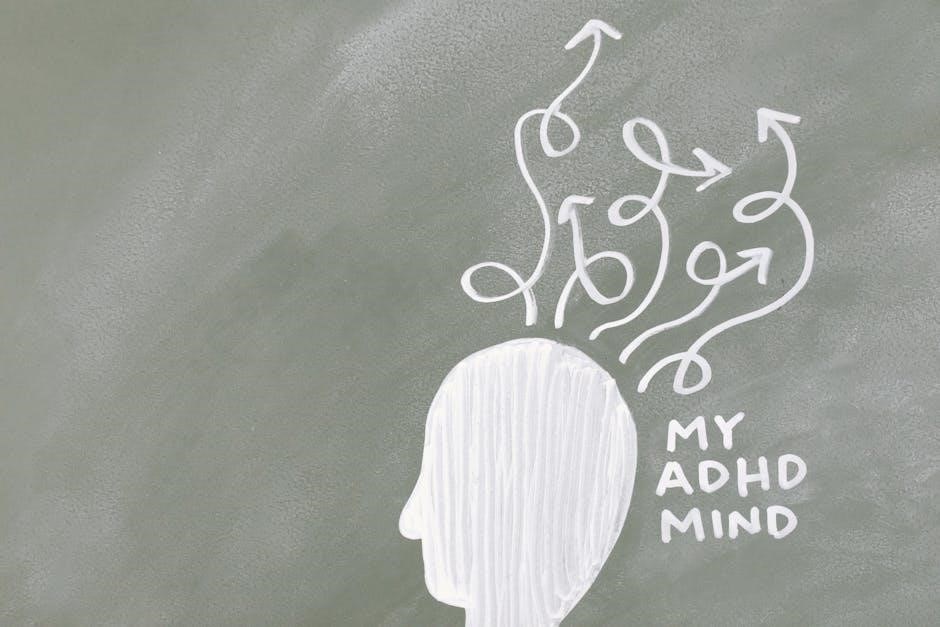504 accommodations for adhd pdf
Definition of 504 Accommodations
A 504 accommodation is a plan developed by schools to provide support and services to students with disabilities, including Attention Deficit Hyperactivity Disorder (ADHD), to ensure they have equal access to education.
The definition of 504 accommodations encompasses a wide range of modifications and adjustments that can be made to help students with ADHD succeed academically and personally.
These accommodations are designed to address the specific needs of each student and may include changes to the learning environment, instructional methods, and assessment procedures.
The goal of 504 accommodations is to provide students with the support they need to overcome the challenges posed by their disability and reach their full potential.
By providing these accommodations, schools can help students with ADHD to better manage their symptoms, stay organized, and develop the skills they need to succeed in school and beyond.
The definition of 504 accommodations is an important concept for parents, educators, and students to understand, as it can have a significant impact on a student’s educational experience and outcomes.
Overall, 504 accommodations play a critical role in ensuring that students with ADHD have the opportunity to succeed and reach their full potential.

Types of 504 Accommodations for ADHD
Various 504 accommodations for ADHD exist, including academic, organizational, and behavioral support services to help students succeed.
Academic Accommodations for ADHD
Academic accommodations for ADHD are designed to help students with Attention Deficit Hyperactivity Disorder succeed in the classroom. These accommodations can include modifications to assignments, extra time to complete assignments, and the use of technology to assist with organization and completion of work. According to online resources, a 504 plan can provide essential accommodations to ensure academic success for students with ADHD. The plan should be tailored to the child’s needs, and may include accommodations such as providing a note-taker, allowing the student to record lectures, and providing extra support from teachers. Additionally, academic accommodations can include modifications to the way material is presented, such as using visual aids or providing written instructions. By providing these accommodations, students with ADHD can better access the curriculum and succeed academically. Overall, academic accommodations are an important part of a 504 plan for students with ADHD. They can help level the playing field and provide equal access to education.
Organizational Accommodations for ADHD
Organizational accommodations for ADHD are designed to help students with Attention Deficit Hyperactivity Disorder manage their time and materials more effectively. These accommodations can include the use of a planner or calendar to keep track of assignments and due dates, as well as the use of folders and binders to organize notes and handouts. According to online resources, providing a checklist of daily tasks and responsibilities can also be helpful. Additionally, organizational accommodations can include providing extra time to complete assignments, and allowing the student to use a computer or tablet to take notes and complete work. By providing these accommodations, students with ADHD can better manage their time and materials, and reduce stress and anxiety. Overall, organizational accommodations are an important part of a 504 plan for students with ADHD, and can help them succeed academically and personally. They can help students develop good habits and skills that will benefit them throughout their lives.
Executive Function Accommodations for ADHD
Executive function accommodations for ADHD are designed to help students with Attention Deficit Hyperactivity Disorder manage their cognitive processes, such as planning, organization, and self-regulation. These accommodations can include providing graphic organizers to help with note-taking and planning, as well as breaking down large assignments into smaller, more manageable tasks. According to online resources, executive function accommodations can also include providing visual reminders and cues to help students stay on track and meet deadlines. Additionally, accommodations can include allowing students to use technology, such as text-to-speech software or mind mapping tools, to help with organization and planning. By providing these accommodations, students with ADHD can better manage their executive function deficits and improve their academic performance. Executive function accommodations can be tailored to meet the individual needs of each student, and can be adjusted as needed to ensure the student’s success. They are an important part of a 504 plan for students with ADHD.
Behavioral Accommodations for ADHD
Behavioral accommodations for ADHD are designed to help students with Attention Deficit Hyperactivity Disorder manage their behavior and impulses in the classroom. These accommodations can include providing positive reinforcement for good behavior, such as stickers or stars on a chart, as well as providing clear expectations and consequences for behavior. According to online resources, behavioral accommodations can also include providing frequent breaks and opportunities for physical activity to help students release excess energy. Additionally, accommodations can include providing a safe and calm space for students to take a break when feeling overwhelmed. By providing these accommodations, students with ADHD can better manage their behavior and impulses, and improve their overall academic performance. Behavioral accommodations can be tailored to meet the individual needs of each student, and can be adjusted as needed to ensure the student’s success. They are an important part of a 504 plan for students with ADHD, helping to create a supportive learning environment.

Examples of 504 Accommodations for ADHD
Examples include preferential seating and regular breaks to help students with ADHD stay focused and on task using available online resources and support services effectively always.
Preferential Seating Accommodations
Preferential seating accommodations are designed to help students with ADHD stay focused and on task by providing them with a designated seating area. This can include seating near the teacher or away from distractions. The goal of preferential seating is to minimize distractions and help the student stay engaged in the learning process. By providing a quiet and comfortable learning environment, students with ADHD can better absorb and process information; Preferential seating accommodations can be tailored to meet the individual needs of each student, and can include features such as a separate desk or table, or a designated quiet area. Online resources and support services can provide more information on how to implement preferential seating accommodations in the classroom. Additionally, teachers and administrators can work together to develop a plan that meets the unique needs of each student with ADHD. This can include regular progress monitoring and adjustments to the seating arrangement as needed.
Regular Breaks Accommodations
Regular breaks accommodations are an essential component of a 504 plan for students with ADHD, allowing them to recharge and refocus. By providing frequent, brief breaks, students can stretch, move, and calm their minds, reducing stress and anxiety. This accommodation can be tailored to meet the individual needs of each student, with breaks scheduled at regular intervals or as needed. Online resources and support services can provide guidance on implementing regular breaks accommodations, including strategies for transitioning between activities and minimizing disruptions to the learning environment. Teachers and administrators can work together to develop a break schedule that meets the unique needs of each student, helping them stay engaged and motivated throughout the day. Regular breaks can also help students with ADHD develop self-regulation skills, such as self-monitoring and self-control, which are essential for academic success. By incorporating regular breaks into a 504 plan, students with ADHD can better manage their symptoms and achieve their full potential.

Creating a 504 Plan for ADHD
Creating a 504 plan involves collaborating with teachers and parents to develop customized accommodations and support services for students with ADHD using online resources and guidance.
Importance of Tailoring the 504 Plan to the Child’s Needs

The importance of tailoring the 504 plan to the child’s needs cannot be overstated, as every child with ADHD is unique and requires personalized support to succeed academically and personally.
A well-crafted 504 plan takes into account the child’s strengths, weaknesses, and learning style, providing a comprehensive framework for accommodations and support services.
By tailoring the 504 plan to the child’s needs, educators and parents can help the child overcome challenges and achieve their full potential, fostering a positive and inclusive learning environment.
This approach also encourages collaboration and communication among educators, parents, and the child, ensuring that everyone is working together to support the child’s success.
Ultimately, a tailored 504 plan is essential for providing children with ADHD the support and accommodations they need to thrive in school and beyond, and online resources can provide guidance and support for this process.
Online resources and PDF guides can provide valuable information and examples to help create an effective 504 plan.
Including Accommodations in the 504 Plan
Including accommodations in the 504 plan is a critical step in ensuring that children with ADHD receive the support they need to succeed in school.
The 504 plan should outline specific accommodations that will be made to help the child access the curriculum and participate fully in educational activities.
These accommodations may include modifications to the learning environment, such as preferential seating or the use of a tape recorder, as well as adjustments to instructional methods and materials.
The plan should also specify how the child’s progress will be monitored and how the effectiveness of the accommodations will be evaluated.
By including accommodations in the 504 plan, educators and parents can work together to create a supportive and inclusive learning environment that meets the unique needs of the child.
Online resources, such as PDF guides and websites, can provide valuable information and examples to help with this process, ensuring that the 504 plan is comprehensive and effective.
This helps to ensure the child receives the support they need to thrive academically and personally.
